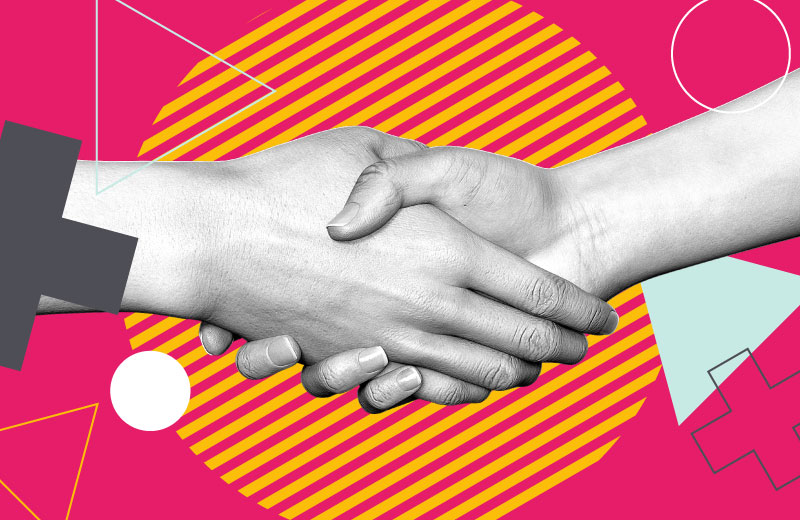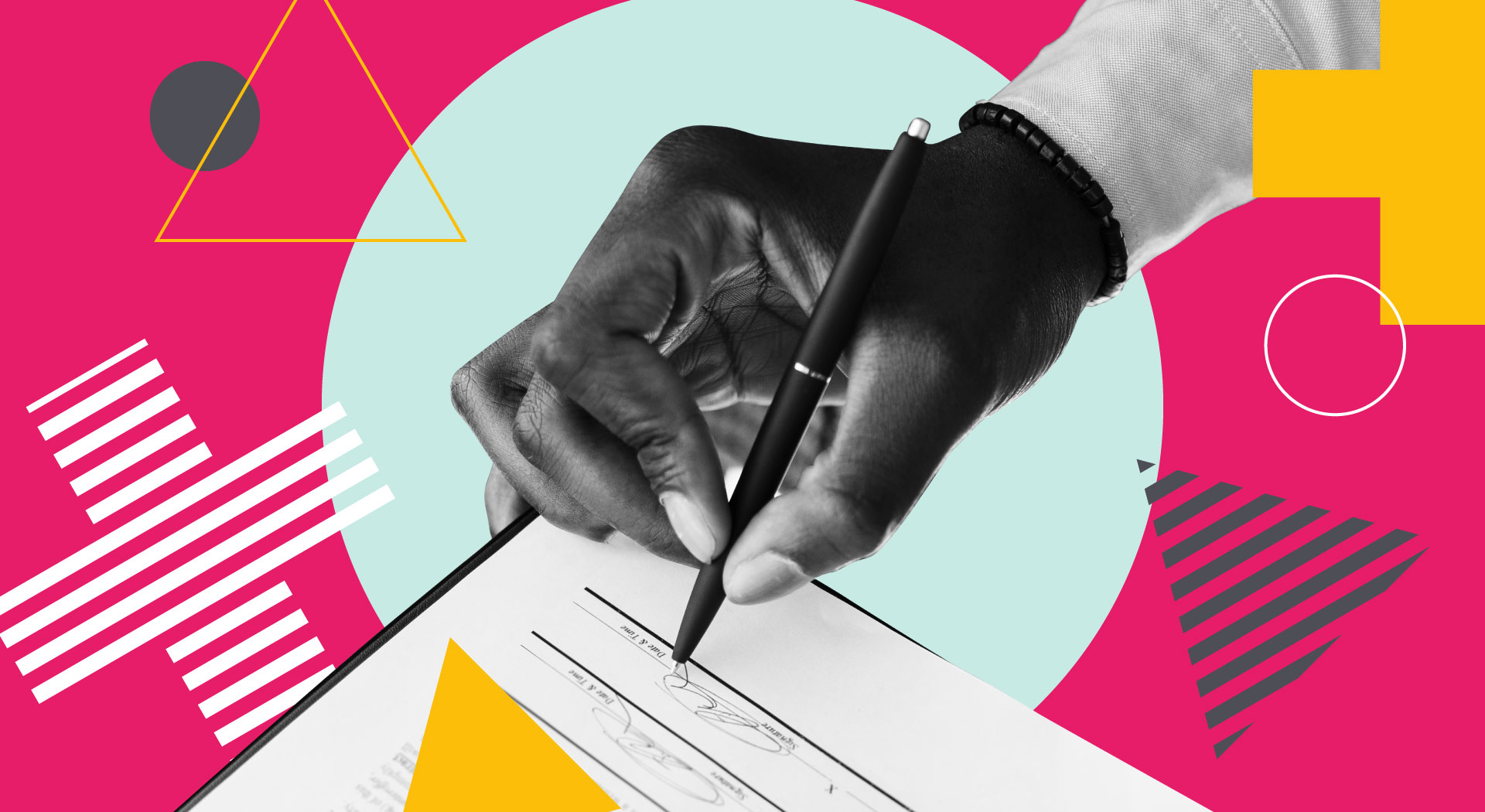

Retainer agreements with graphic design agencies can be an excellent way for marketing and managing directors to secure ongoing design support while saving time and benefitting from a close relationship with the design firm. By signing a retainer agreement with a reputable design agency, you can ensure that your branding and marketing materials are consistent and professional without paying for each project separately.
Retainers are great for creative firms, too, as they mean a steady stream of income and the ability to plan for resources and staffing needs.
But how do you know if you need one? Let's delve into the pros and cons.

Pros
- You can plan your budget. One of the main benefits of a retainer agreement is that it allows you to budget for design services more effectively. Instead of worrying about unexpected costs for each project, you can plan and know exactly how much you'll be paying for design and consultancy each month or year. This can help you avoid overspending on design services and keep your marketing budget in check.
- You become a priority client. Retainer work should be planned into a design firm's schedule before ad hoc client work to guarantee the time you're paying for, and in addition, you'll also receive a priority service. If you need a design project completed quickly, you'll be at the top of the agency's list. This can be especially useful if your organisation has frequent design needs or you need to create marketing materials on short notice.
- Your retainer agency becomes like your in-house team. A successful retainer agreement will involve regular contact with your creative firm, leading to a very close relationship, almost like an in-house team. That level of trust and respect means projects run more efficiently and creative outputs are enhanced.
Cons
- You need to get the hours right. Most retainer contracts will allow you to go over the agreed number of hours at extra cost, but you won't get a refund on hours you have yet to use. This is because the agreement means the agency guarantees your hours and plans accordingly around them, potentially turning down other work in favour of you.
- It can take a lot of work to back out. While the commitment from both sides allows a creative agency to prioritise your work, getting out of the agreement early can be difficult as agreements are for a fixed term. In these situations, you may need to pay the remaining fees in a lump sum to conclude the deal or let the current term run its course.
- You can be locked into an unsuccessful relationship. If you're unsatisfied with the work, you may feel stuck working with the agency.

How do I know if a retainer is suitable for my business?
The first question you must ask yourself is how much you will need to achieve in the next six months, a year and beyond. If you only need a few pieces of design here and there, it won't be worth having a design partner on hand via retainer. However, if you know there are a lot of projects, and there seems to be a pattern or average amount of work completed each month, a retainer could be an excellent solution.
Then, you'll need to do some number crunching. There are two ways to approach it: either budget first or need first.
- Budget first. How much do you have to spend on external design and consultancy services? This might be as simple as reviewing what you're already spending and what is left in your budget. Alternatively, find some trusted partners (more on that in our post Finding your perfect creative partner: A guide for business owners and marketing directorss) and discuss with them what you could achieve with your budget and what you need to achieve. Do these match up?
- Need first. If you're already working with a design firm, this might be easy because you can see how many hours are used on average and what is achieved with those. If not, review your needs over the last six months to a year and what you'll likely need to accomplish in the next year. Then, speak with trusted design agencies to determine your budget to meet those requirements.

I've decided a retainer is suitable for my organisation. How do I get started?
A lot of trust is required to make a retainer successful for everyone involved. If this is your first time working with your chosen design partner, test them out with a few smaller jobs on a project-only basis to ensure you're a great match.
Once those projects are completed, if you feel working with your design partner is a breeze because communication is clear, they are upfront about all issues, so you know what to expect, and you love their creative output, it's time to talk retainers!
Between you and your design partner, you'll need to agree on how many hours per month you need and at what rate, based on what you've concluded in the How do I know if a retainer suits my business? section above.
It can be worth setting up the retainer for an initial three months to check the number of hours and output work for everyone. Then, you can adjust and run another trial period, if needed, or scale up the agreement to six months, a year or more.
What should I be aware of when signing a retainer contract?
I'm not legally qualified, so don't construe this blog post as legal advice. You should always check through your retainer contract (or anything else you sign) with a qualified legal professional before signing to ensure it is fair and legally binding.
A decent design agency should have their contracts professionally written. I worked with Heather Stanford of Stanford Gould on the Studio Bifrost contracts. There are several things to consider when checking what you're agreeing to:
- What is included and not included in the contract? Additional expenses like photography and print are likely to be charged extra on top of the agreement design hours because these are generally one-off costs – so make sure you have money left in your budget to cover these if needed.
- What happens if you go over or under the hours in the agreement? Can you roll unused hours over each month? It's common to be able to move at least some hours over within the contract term, but if they are left at the end of the term, you'll likely lose them for reasons explained earlier in this post. Going over the agreed hours is usually charged extra, but check the rate and when you'd be billed for them.
- How will you be updated with how many hours are being used? You would definitely want to avoid getting to the end of a 12-month contract to find you have loads of hours left over and no way of using them up before the end of the term! Therefore, your chosen design partner should update you regularly, which should be laid out in the contract.
- What are the payment terms? It’s an obvious one, but it’s worth mentioning!
- What is the process for renewing the agreement? Will there be a review, and then you need to sign another contract, or is it an 'evergreen' contract? Evergreen contracts automatically renew unless notice of cancellation has been given in an agreed amount of time.
- What are the cancellation terms? In what circumstances can you cancel the contract early if you need to, and what would the penalty be?

Conclusion
Consider a retainer agreement with a design agency if your business has ongoing design needs. It's essential to weigh the pros and cons, do your research, and communicate clearly to determine the right choice for your organisation. Building a long-term relationship with a trusted design partner can be an excellent outcome for your organisation and your creative team!
A partnership made in heaven?
Feeling inspired? We'd love to help! We are a team of collaborators that enjoy nothing more than partnering with ambitious clients. Get in touch if you'd like to talk through your next project or get some advice.



